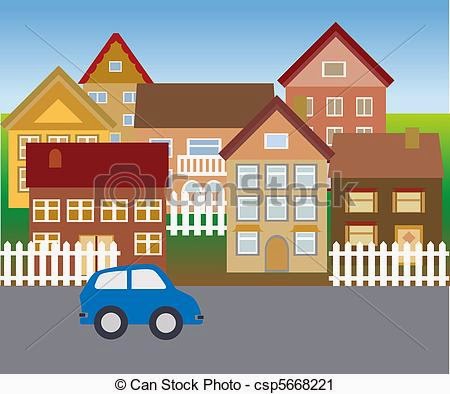Suburban, Urban or Rural: Which is Right for You?
If you're unfettered by a particular job in a particular locale, deciding where to live isn't as easy as it may seem. Often, a battle ensues between our heads and our hearts. And the real estate mantra of "location, location, location" does nothing to help us decide which location we might prefer – the city, suburbs or a rural setting.
Whether you think that life on a farm is right for you or a penthouse view may be more to your liking, let's take a look at suburban, urban and rural environments to see if we can shake loose a decision.
Suburban
Ah, the 'burbs. Although Cicero referred to the hillside homes of Rome's wealthy residents as "suburbani," the suburban boom exploded in the U.S. during the 1950s, a by-product of both World War II and the baby boomer generation.
Returning soldiers, waving their G.I. Bill authorizations (now known as the VA loan), were met by more-than accommodating land developers, such as William Levitt, creator of the so-called Levittowns on the East Coast. Since these developments were located just outside the city, they were typically less expensive for veterans than renting a home inside city limits – thus their popularity.
By the 1960s suburbanites made up one-third of the nation's population, according to the History Channel. Today, the trend is reversed, or so says Time's Leigh Gallagher. She cites the "endless sprawl" of suburbia as one of the reasons "more and more Americans don't want to live there anymore."
The most significant characteristics of the suburbs are:
Subdivisions.
Shopping malls.
A greater population density and fewer agricultural acres than rural areas.
Examples of suburbs include Canoga Park in Los Angeles, Bayside in New York and Oak Park in Illinois. Smaller cities have suburbs as well, such as the many outlying areas of the Twin Cities in Minnesota.
The suburbs are ideal for those who want a small-town vibe with big-city amenities, a quick commute to work in the nearby city, and a yard of their own.
Urban
Urban is a word that connotes different things to different people. It can mean grunge, crime and congestion, or it can bring up images of energy, camaraderie and anonymity.
Urban areas are crowded. In fact, that's part of the definition of a city: An increased density of humans and their structures make up the urban jungle. The 2010 census tells us that 82 percent of the country's population lives in urban areas.
A study published in the journal, Proceedings of the Royal Society B, suggests that all this congestion plays havoc on a city dweller's internal clock. "The researchers say these changes to their biological rhythms could lead to more health problems and shorter lives. The study also found that city living makes us active for longer and less rested," according to The Independent.
Weigh that problem, however, against the stress of a long commute from the suburbs and it may all work out in the wash.
Examples of major urban areas include New York, Chicago and Los Angeles. Medium-sized cities include Fort Wayne, Ind.; Cape Coral, Fla. and El Paso, Texas.
Urban areas are generally more expensive than rural areas, with higher food, housing and transportation costs. Cities are ideal for people who crave convenience, proximity to other people and instant gratification.
Rural
If it's not a city and it's not a suburb, and there are plenty of wide-open spaces, you are in a rural community. In fact, 98 percent of the United States is considered rural, yet only 25 percent of our population lives there.
Experts break down rural areas into villages, with a population between 200 and 800; hamlets, with populations less than 200 and isolated dwellings with just one or two buildings for a family – such as a farm.
Rural areas offer solitude and less crime than you'll find in both urban and suburban settings. Agriculture is the primary industry here, so if you fancy yourself a rancher or farmer, this might be the ideal location for you.
Although most Americans live in cities, most of the world's population lives in rural areas, according to National Geographic. Rural areas tend to be less expensive compared to urban and suburban areas.
Examples of our nation's rural areas include Alpine County, Calif.; Lincoln County, Mont. and Addieville, Ill.
Deciding where to live has to do with your budget, your job and the type of lifestyle you're seeking. Downtown, the lights are bright and the hustle and hum may be soothing to some. Others crave dark, starry nights and the sounds of wildlife. Still others want the best of both of those worlds and choose the spot in between.
Life is full of compromises and the debate over which offers more - suburban, urban or rural - will continue. In the end, it all comes down to individual preference.
search for homes at
www.buyandsellnorthvirginia.com
Asifa Zia
Licensed in VA
Keller Williams Realty
Manassas VA
540-729-3470
aszia09@gmail.com


Comments
Post a Comment